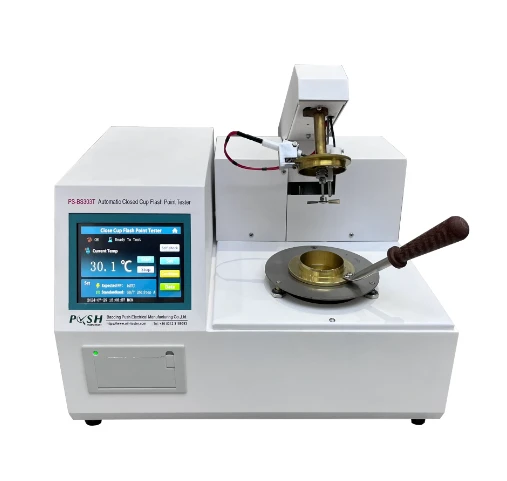TEL:
+86-0312-3189593
 English
English

Telephone:0312-3189593

Email:sales@oil-tester.com

-
 Afrikaans
Afrikaans -
 Albanian
Albanian -
 Amharic
Amharic -
 Arabic
Arabic -
 Armenian
Armenian -
 Azerbaijani
Azerbaijani -
 Basque
Basque -
 Belarusian
Belarusian -
 Bengali
Bengali -
 Bosnian
Bosnian -
 Bulgarian
Bulgarian -
 Catalan
Catalan -
 Cebuano
Cebuano -
 China
China -
 China (Taiwan)
China (Taiwan) -
 Corsican
Corsican -
 Croatian
Croatian -
 Czech
Czech -
 Danish
Danish -
 Dutch
Dutch -
 English
English -
 Esperanto
Esperanto -
 Estonian
Estonian -
 Finnish
Finnish -
 French
French -
 Frisian
Frisian -
 Galician
Galician -
 Georgian
Georgian -
 German
German -
 Greek
Greek -
 Gujarati
Gujarati -
 Haitian Creole
Haitian Creole -
 hausa
hausa -
 hawaiian
hawaiian -
 Hebrew
Hebrew -
 Hindi
Hindi -
 Miao
Miao -
 Hungarian
Hungarian -
 Icelandic
Icelandic -
 igbo
igbo -
 Indonesian
Indonesian -
 irish
irish -
 Italian
Italian -
 Japanese
Japanese -
 Javanese
Javanese -
 Kannada
Kannada -
 kazakh
kazakh -
 Khmer
Khmer -
 Rwandese
Rwandese -
 Korean
Korean -
 Kurdish
Kurdish -
 Kyrgyz
Kyrgyz -
 Lao
Lao -
 Latin
Latin -
 Latvian
Latvian -
 Lithuanian
Lithuanian -
 Luxembourgish
Luxembourgish -
 Macedonian
Macedonian -
 Malgashi
Malgashi -
 Malay
Malay -
 Malayalam
Malayalam -
 Maltese
Maltese -
 Maori
Maori -
 Marathi
Marathi -
 Mongolian
Mongolian -
 Myanmar
Myanmar -
 Nepali
Nepali -
 Norwegian
Norwegian -
 Norwegian
Norwegian -
 Occitan
Occitan -
 Pashto
Pashto -
 Persian
Persian -
 Polish
Polish -
 Portuguese
Portuguese -
 Punjabi
Punjabi -
 Romanian
Romanian -
 Russian
Russian -
 Samoan
Samoan -
 Scottish Gaelic
Scottish Gaelic -
 Serbian
Serbian -
 Sesotho
Sesotho -
 Shona
Shona -
 Sindhi
Sindhi -
 Sinhala
Sinhala -
 Slovak
Slovak -
 Slovenian
Slovenian -
 Somali
Somali -
 Spanish
Spanish -
 Sundanese
Sundanese -
 Swahili
Swahili -
 Swedish
Swedish -
 Tagalog
Tagalog -
 Tajik
Tajik -
 Tamil
Tamil -
 Tatar
Tatar -
 Telugu
Telugu -
 Thai
Thai -
 Turkish
Turkish -
 Turkmen
Turkmen -
 Ukrainian
Ukrainian -
 Urdu
Urdu -
 Uighur
Uighur -
 Uzbek
Uzbek -
 Vietnamese
Vietnamese -
 Welsh
Welsh -
 Bantu
Bantu -
 Yiddish
Yiddish -
 Yoruba
Yoruba -
 Zulu
Zulu
ມ.ກ. . 31, 2025 01:13
Back to list
acidity in transformer oil
Acidity in transformer oil is a significant factor that impacts the lifespan and efficiency of transformers used across various industries. Transformer oil plays a vital role in the safe and efficient functioning of a transformer by providing necessary insulation and cooling. However, over time, acids can form in the oil, substantially degrading its performance and risking transformer safety.
Ignoring the acidity in transformer oil can lead to a cascade of detrimental effects. Initially, the acidic oil starts attacking the cellulose insulation used in transformers, resulting in insulation breakdown. This escalation in degradation is often unseen until a failure occurs, which can be economically and operationally disastrous. Moreover, increased acidity can result in overheating, as cooling efficiency diminishes, further exacerbating transformer degradation at an accelerated rate. The resulting downtime and repair costs can severely impact operational budgets and decrease the reliability of power distribution. Preventive Measures and Solutions Regular monitoring and testing of transformer oil's acidity levels are fundamental for maintaining optimal transformer functionality. Continuous education and training of operational personnel can ensure that they understand the significance of oil testing and maintenance schedules. Adopting oil reclamation techniques can rejuvenate degraded oil, removing acidic components and restoring its chemical properties. Implementing high-quality oils that exhibit superior oxidation stability and minimal impurity infiltration can significantly delay acid formation. Furthermore, installing air-tight seals and ensuring that transformers are adequately ventilated can help prevent external contaminants from entering the system. Preventive measures not only extend the service life of transformers but also enhance their efficiency and reduce operational risks. The growing demands in the power industry underscore the necessity of maintaining transformer systems. Recognizing the role of acidity in transformer oil and taking proactive measures will hedge against potential disruptions and costs, safeguarding both infrastructure and investments.


Ignoring the acidity in transformer oil can lead to a cascade of detrimental effects. Initially, the acidic oil starts attacking the cellulose insulation used in transformers, resulting in insulation breakdown. This escalation in degradation is often unseen until a failure occurs, which can be economically and operationally disastrous. Moreover, increased acidity can result in overheating, as cooling efficiency diminishes, further exacerbating transformer degradation at an accelerated rate. The resulting downtime and repair costs can severely impact operational budgets and decrease the reliability of power distribution. Preventive Measures and Solutions Regular monitoring and testing of transformer oil's acidity levels are fundamental for maintaining optimal transformer functionality. Continuous education and training of operational personnel can ensure that they understand the significance of oil testing and maintenance schedules. Adopting oil reclamation techniques can rejuvenate degraded oil, removing acidic components and restoring its chemical properties. Implementing high-quality oils that exhibit superior oxidation stability and minimal impurity infiltration can significantly delay acid formation. Furthermore, installing air-tight seals and ensuring that transformers are adequately ventilated can help prevent external contaminants from entering the system. Preventive measures not only extend the service life of transformers but also enhance their efficiency and reduce operational risks. The growing demands in the power industry underscore the necessity of maintaining transformer systems. Recognizing the role of acidity in transformer oil and taking proactive measures will hedge against potential disruptions and costs, safeguarding both infrastructure and investments.
Previous:
Latest news
-
Testing Equipment Industry Sees Major Advancements in 2025: Smart & Precision Technologies Lead the WayNewsJun.06,2025
-
Applications of Direct Current Generators in Renewable Energy SystemsNewsJun.05,2025
-
Hipot Tester Calibration and Accuracy GuidelinesNewsJun.05,2025
-
Digital Circuit Breaker Analyzer Features and BenefitsNewsJun.05,2025
-
Benefits of Real-Time Power Quality Monitoring Devices for Industrial EfficiencyNewsJun.05,2025
-
Earth Fault Loop Testing in High-Rise Building Electrical SystemsNewsJun.05,2025



